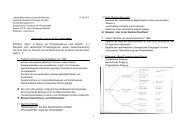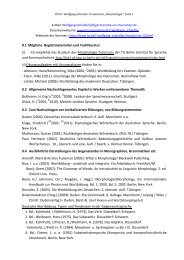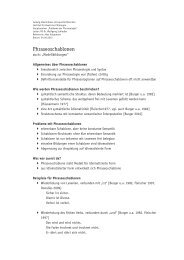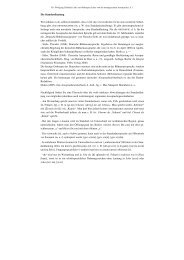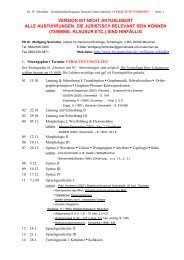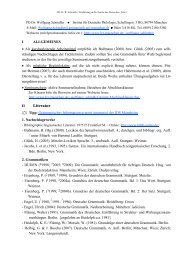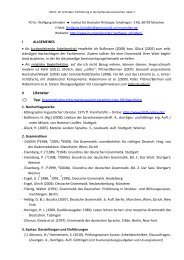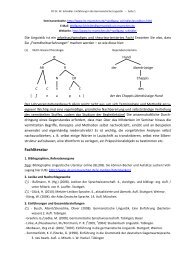Chapter 18 Lexical Functions: Description of Lexical Relations in a ...
Chapter 18 Lexical Functions: Description of Lexical Relations in a ...
Chapter 18 Lexical Functions: Description of Lexical Relations in a ...
Create successful ePaper yourself
Turn your PDF publications into a flip-book with our unique Google optimized e-Paper software.
<strong>Chapter</strong> <strong>18</strong><br />
<strong>Lexical</strong> <strong>Functions</strong>:<br />
—<strong>Chapter</strong> <strong>18</strong>. <strong>Lexical</strong> <strong>Functions</strong>— 2<br />
<strong>Description</strong> <strong>of</strong> <strong>Lexical</strong> <strong>Relations</strong> <strong>in</strong> a Lexicon<br />
Žolkovskij & Mel´čuk 1966, 1967, Mel´čuk 1974: 78ff, Mel’čuk 1982, 1988a: 61ff, 1996,<br />
[78], [79: 55-66], [35], Alonso Ramos 1993, Polguère 2000, Ste<strong>in</strong>l<strong>in</strong> et al. 2004.<br />
To speak <strong>of</strong> <strong>Lexical</strong> <strong>Functions</strong>, one needs first the notion <strong>of</strong> lexical correlates and<br />
those <strong>of</strong> their two major types: 1) semantic derivations and 2) collocates; I beg<strong>in</strong><br />
with sketch<strong>in</strong>g these three notions. Based on them, <strong>Lexical</strong> <strong>Functions</strong> are <strong>in</strong>troduced and studied<br />
<strong>in</strong> detail. Accord<strong>in</strong>gly, <strong>Chapter</strong> <strong>18</strong> is organized <strong>in</strong> seven sections:<br />
1. <strong>Lexical</strong> Correlates<br />
2. The Notion <strong>of</strong> <strong>Lexical</strong> Function<br />
3. Review <strong>of</strong> Simple Standard <strong>Lexical</strong> <strong>Functions</strong><br />
4. Other types <strong>of</strong> <strong>Lexical</strong> <strong>Functions</strong><br />
5. Presentation <strong>of</strong> the Values <strong>of</strong> <strong>Lexical</strong> <strong>Functions</strong> <strong>in</strong> an ECD<br />
6. L<strong>in</strong>guistic Nature <strong>of</strong> <strong>Lexical</strong> <strong>Functions</strong><br />
7. Exhaustiveness <strong>of</strong> the Simple Standard <strong>Lexical</strong> <strong>Functions</strong> Inventory<br />
1 <strong>Lexical</strong> Correlates <strong>of</strong> a <strong>Lexical</strong> Unit<br />
1.1 Introductory Remarks<br />
In the process <strong>of</strong> text production, the Speaker is faced at the outset with the problem <strong>of</strong> lexical<br />
choices: <strong>in</strong> order to go from a given Sem(antic) R(epresentation) [= SemR] to a correspond<strong>in</strong>g<br />
D(eep-)Synt(actic) R(epresentation) [= DSyntR] <strong>of</strong> the sentence he <strong>in</strong>tends to utter, the Speaker<br />
has to select lexical units [= LUs]—lexemes and phrasemes (that is, words and idioms)—that he<br />
will use to build his sentence. In this perspective, two types <strong>of</strong> LUs have to be dist<strong>in</strong>guished.<br />
• The LUs <strong>of</strong> the first type constitute the huge majority <strong>of</strong> the LUs <strong>of</strong> any language L. They<br />
could be somewhat loosely called free LUs. In text production a free LU L is selected by the<br />
Speaker strictly accord<strong>in</strong>g to its mean<strong>in</strong>g, and it is looked for—<strong>in</strong> the Speaker’s lexical stock—<br />
<strong>in</strong>dependently <strong>of</strong> other lexical choices, previously made or to be made. Thus, if the Speaker needs<br />
to refer to a (four-wheel motor vehicle designed for transport <strong>of</strong> a few people ...) he says CAR.<br />
These are semantically-driven free lexical choices.


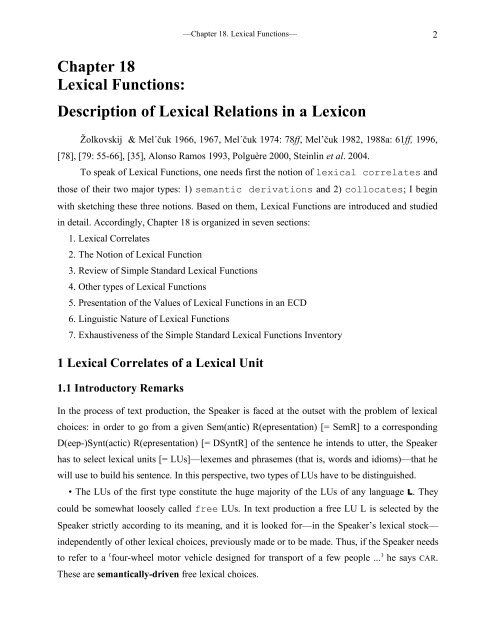
![E-Mail: Wolfgang.Schindler[ätt]germanistik.uni-muenchen.de Web ...](https://img.yumpu.com/51590147/1/184x260/e-mail-wolfgangschindlerattgermanistikuni-muenchende-web-.jpg?quality=85)
